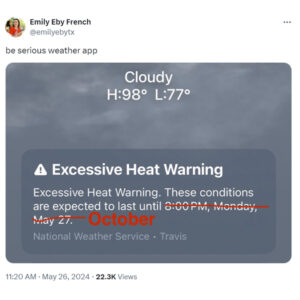FERC on May 23 found SPP’s tariff revisions laying out how it determines its planning reserve margin (PRM) methodology only partly met the commission’s order on rehearing and directed an additional compliance filing within 30 days (ER24-1221).
The commission said SPP complied with its directive to include a timeline for making changes to the PRM before a planning year in its tariff. But it also said the RTO failed to include further information on how it uses its loss-of-load expectation studies to determine the PRM.
FERC accepted SPP’s tariff revisions effective April 10, subject to further compliance.
The commission rejected protests from the grid operator’s members that SPP provide three years’ notice before increasing the PRM and that it be prohibited from adopting near-term increases without demonstrating that the market has capacity surplus available for purchase. The commission found both arguments to be outside the compliance proceeding’s scope, saying its directive only required the timeline for making PRM changes.
The RTO said it will perform an LOLE study at least biennially to determine whether a PRM change is needed and post the results. Staff will then provide a recommendation for any changes, with the Board of Directors and state regulators approving the change. The tariff revisions place additional restrictions on any approved PRM that exceeds the current value or the value identified in the final LOLE results by 1% or more; any PRM increase would be implemented for the planning year, beginning at least one year after approval.
SPP’s board in 2022 approved changing the PRM to 15% from 12% over opposition from stakeholders advocating a three-year phase-in. Load-responsible entities unable to meet the requirement can incur financial penalties from the RTO. (See SPP Board, Regulators Side with Staff over Reserve Margin.)
FERC last year rejected a complaint by SPP members seeking to overturn the decision. In a 3-1 vote, the commission ruled that American Electric Power, Oklahoma Gas and Electric, and Xcel Energy failed to show SPP’s PRM process was unjust, unreasonable or unduly discriminatory because the figure itself was not included in its tariff. (See FERC Rejects Protest of SPP PRM Increase.)
AEP, OG&E and Xcel filed a rehearing request with FERC, but the commission took no action on it. They then filed a petition for review with the 8th U.S. Circuit Court of Appeals in July 2023; that proceeding has been held in abeyance pending SPP’s compliance filing following a successful FERC motion (23-2734).
FERC found in September 2023 that SPP’s proposal failed to “adequately” explain how it would account for the LOLE study’s results or any additional considerations when determining the PRM, and that the tariff did not adequately explain the timeline for the RTO’s PRM reviews (EL23-40-001). FERC ordered a compliance filing within 60 days, but SPP and the protesting companies jointly requested an extension to February, which the commission granted.
